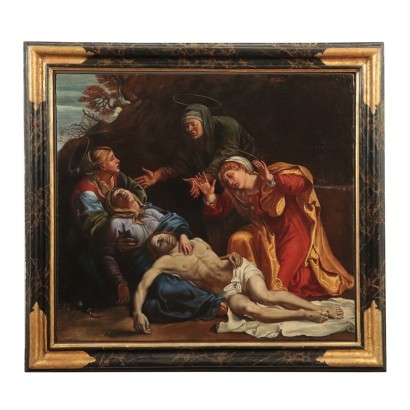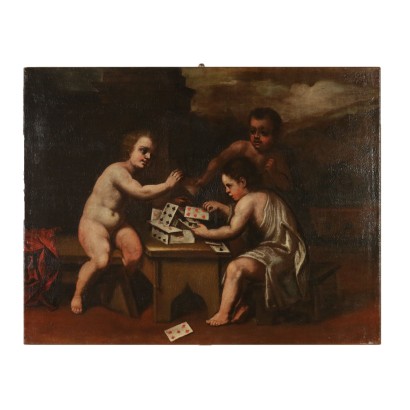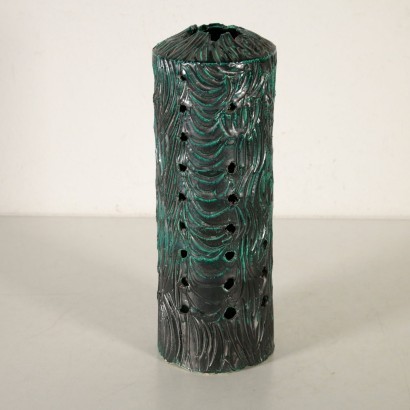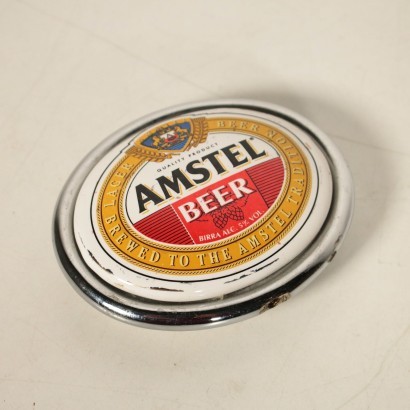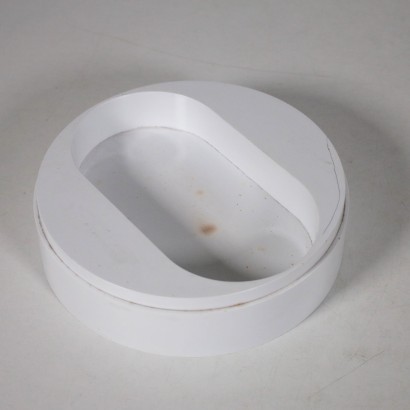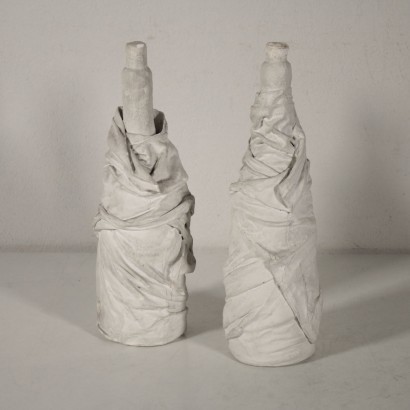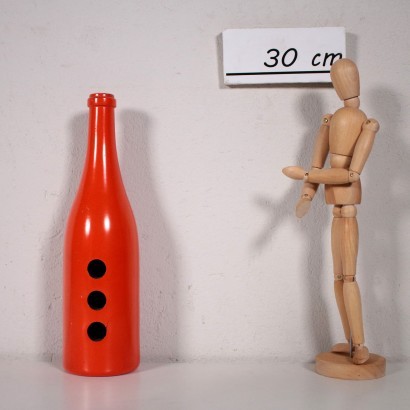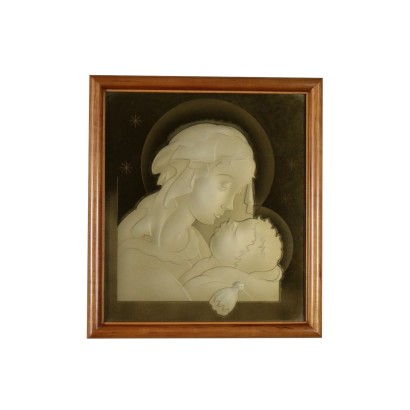Copy of Annibale Carracci's Painting, Oil on Canvas, 17th Century - Marcy with the three Maries
Features
Marcy with the three Maries
Artist: Annibale Carracci (1560-1609) Copy from
Age: 17th Century / 1601 - 1700
Subject: Sacred Subject
Artistic technique: Painting
Technical specification: Oil on Canvas
Description
Oil on canvas. Copy of the famous painting of Annibale Carracci, made between 1604-1606 and today preserved at the National Gallery of London. The scene takes place in front of the cave of the sepulcher where Jesus is going to be buried; we can see the gravestone that creates a neutral backgruond on the right of the painting, broken up by a fragment of landscape on the upper left corner where the colored figures stand out. Those are placed in ascending order along the diagonal outlined by the group in the foreground that starts from the Jesus's body, lying dead agaisnt Virgin Mary's womb who's also supported by one of the Maries. A seconf diagonal is outlined by the other two figures, the desperated Magdalene and the third Mary, almost wrapped by darkness. The dismay of the Maries contrasts the dead body's of Christ and the inertia of the fainted Virgin Mary; while the attention of Magdalene is focused on Jesus, the other women are focused on the Mother. Magdalene can be recognized by the gaudy colors of her robe that, compared to the poor and popular robe of the other women, is more refined and rich. The painting had alredy been restored and comes with a refined and modified vintage frame.
Product Condition:
Fair condition. Wear consistent with age and use.
Frame Size (cm):
Height: 113
Width: 123
Depth: 6
Artwork dimensions (cm):
Height: 91,5
Width: 102
Additional Information
Artist: Annibale Carracci (1560-1609)
Born in Bologna on November 3, 1560, Annibale Carracci, in contrast to the now sterile results of late Mannerism, proposed the recovery of the great tradition of Italian painting of the sixteenth century, managing to obtain an original synthesis of the many schools of the mature Renaissance. Alongside the recovery of tradition, Il Carracci also proposed a return to the imitation of truth. With Caravaggio and Rubens, he laid the foundations for the birth of Baroque painting, of which he was one of the noble fathers. Of fundamental importance in the development of his career were the relationships with his cousin Ludovico and his brother Agostino - both very gifted painters - with whom, at the beginning, he held a common workshop and with whom he collaborated, on several occasions, even later. With his cousin Ludovico, Annibale founded the Accademia dei Desiderosi in 1582 (later called Accademia degli Incamminati), in which he learned to combine the attention to the typical design of the Florentine school with the taste for color typical of the Venetian one. The monumental cycles of frescoes created for the Bolognese villas led to the invitation of Cardinal Odoardo Farnese for the decoration of the noble floor of Palazzo Farnese in Rome. Arrived in Rome with Agostino in 1595, he created the famous frescoes depicting the loves of the gods, considered an absolute masterpiece of fresco painting of the time. As if to seal the continuity with the great masters of the Renaissance, Annibale Carracci was buried in the Pantheon alongside Raphael on his death in Rome in 1609.
Age: 17th Century / 1601 - 1700
17th Century / 1601 - 1700
Subject: Sacred Subject
Artistic technique: Painting
La pittura è l'arte che consiste nell'applicare dei pigmenti a un supporto come la carta, la tela, la seta, la ceramica, il legno, il vetro o un muro. Essendo i pigmenti essenzialmente solidi, è necessario utilizzare un legante, che li porti a uno stadio liquido, più fluido o più denso, e un collante, che permetta l'adesione duratura al supporto. Chi dipinge è detto pittore o pittrice. Il risultato è un'immagine che, a seconda delle intenzioni dell'autore, esprime la sua percezione del mondo o una libera associazione di forme o un qualsiasi altro significato, a seconda della sua creatività, del suo gusto estetico e di quello della società di cui fa parte.
Technical specification: Oil on Canvas
The oil painting is a painting technique using powder pigments mixed with bases in inert and oils. 


